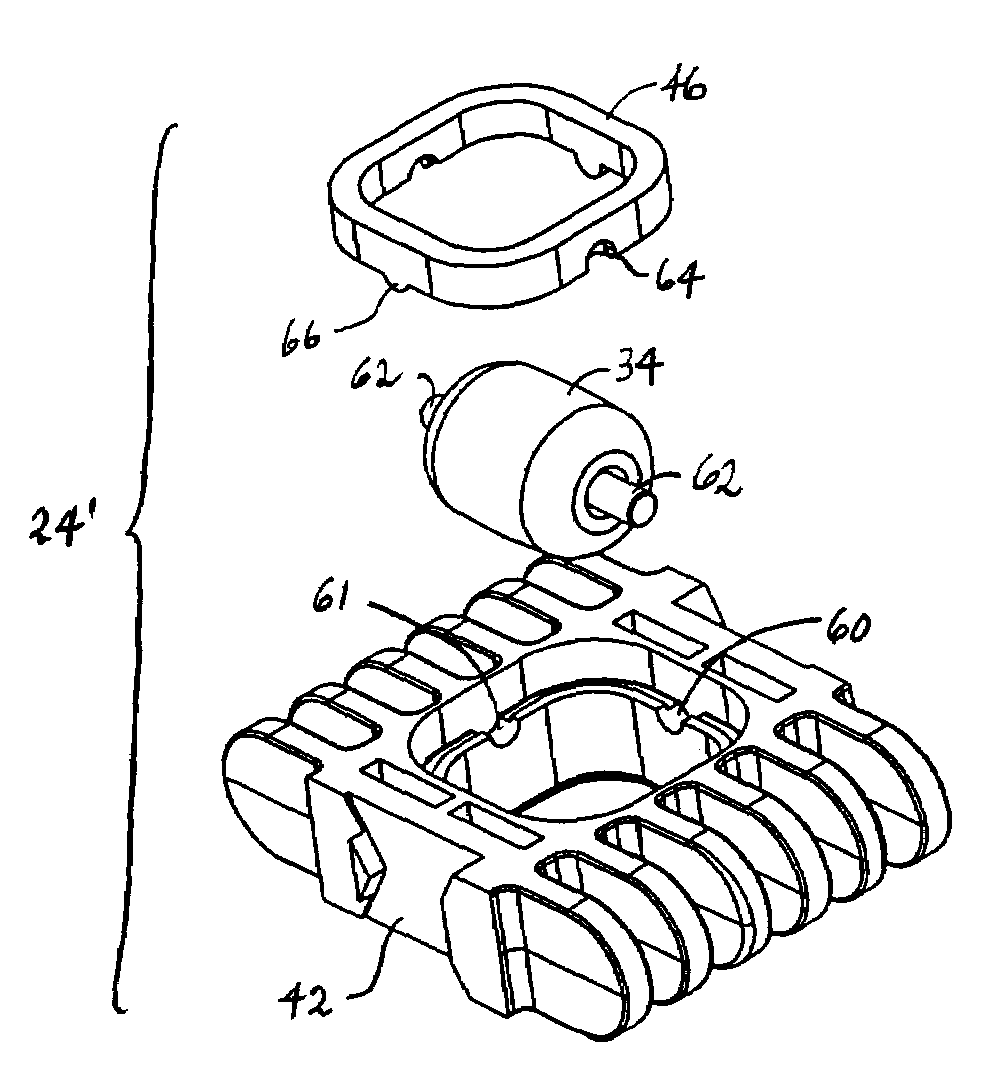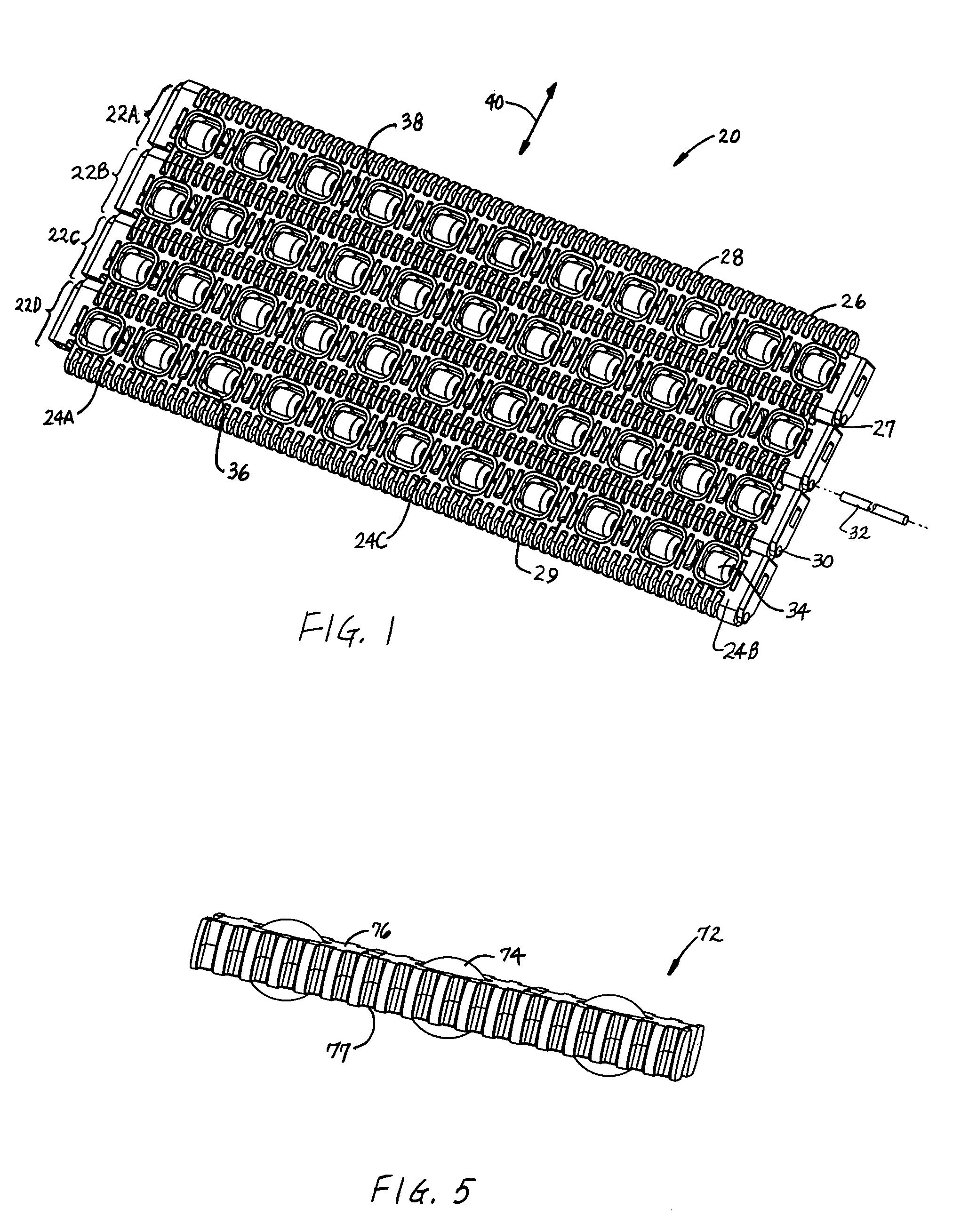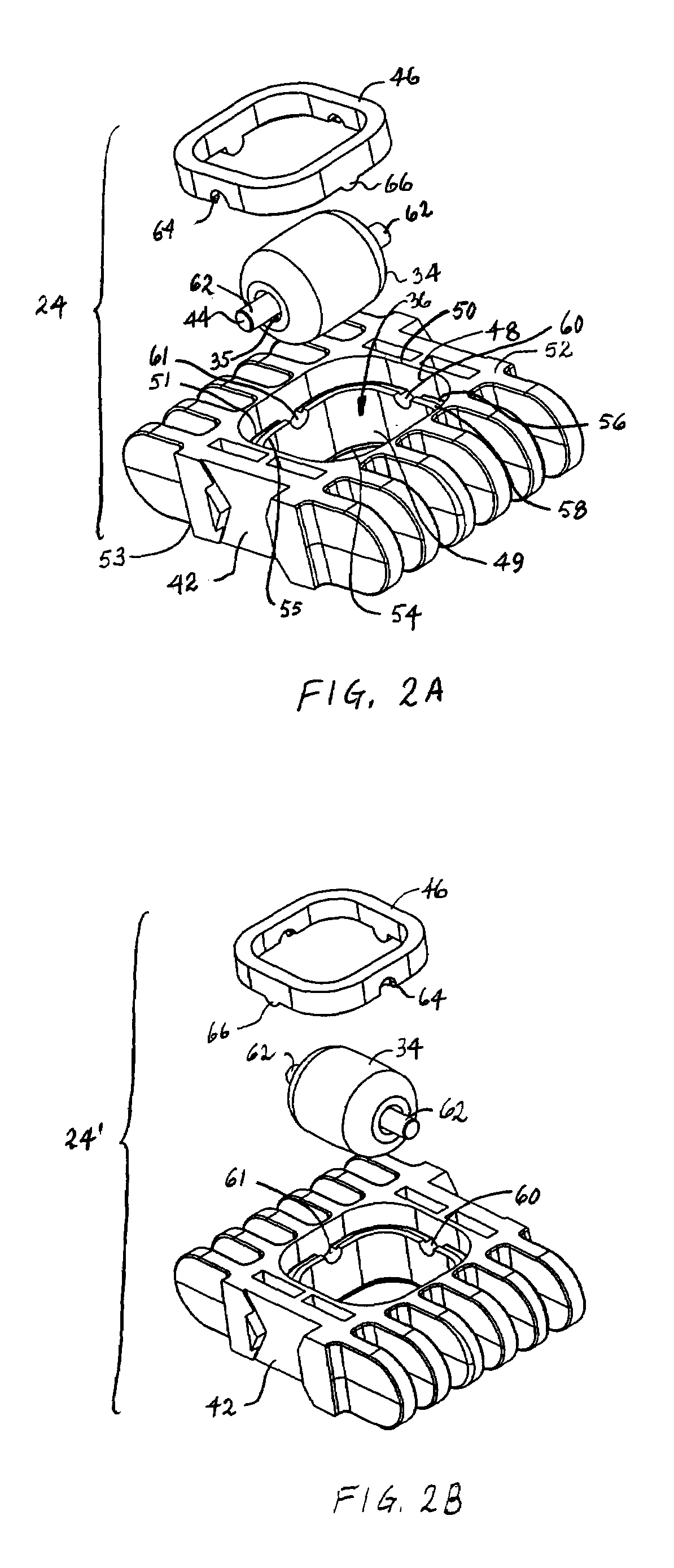Conveyor belt modules with embedded rollers retained in the modules and associated method
a technology of conveyor belts and modules, applied in the direction of conveyor parts, rollers, transportation and packaging, etc., can solve the problems of reducing the pull strength of the belt, and affecting the service life of the bel
- Summary
- Abstract
- Description
- Claims
- Application Information
AI Technical Summary
Benefits of technology
Problems solved by technology
Method used
Image
Examples
Embodiment Construction
[0022]A portion of a modular plastic conveyor belt having modules embodying features of the invention is shown in FIG. 1. The belt 20 is constructed of a series of rows 22A–D of belt modules 24: short edge modules 24A, long edge modules 24B, and interior modules 24C. Although the modules are preferably arranged in a bricklay, the belt could be formed otherwise, such as with a single module per row. Each module extends longitudinally from a first end 26 to a second end 27. A first set of hinge eyes 28 is arranged with the hinge eyes spaced apart along the first end, and a second set of hinge eyes 29 is arranged with the hinge eyes spaced apart along the second end. The first set of hinge eyes of one row of modules interleaves with the second set of hinge eyes of an adjacent row. Aligned apertures 30 in the interleaved hinge eyes form a transverse passageway across the width of the belt. A hinge rod 32 journaled in the passageway connects consecutive rows together in a hinge joint tha...
PUM
 Login to View More
Login to View More Abstract
Description
Claims
Application Information
 Login to View More
Login to View More - R&D
- Intellectual Property
- Life Sciences
- Materials
- Tech Scout
- Unparalleled Data Quality
- Higher Quality Content
- 60% Fewer Hallucinations
Browse by: Latest US Patents, China's latest patents, Technical Efficacy Thesaurus, Application Domain, Technology Topic, Popular Technical Reports.
© 2025 PatSnap. All rights reserved.Legal|Privacy policy|Modern Slavery Act Transparency Statement|Sitemap|About US| Contact US: help@patsnap.com



